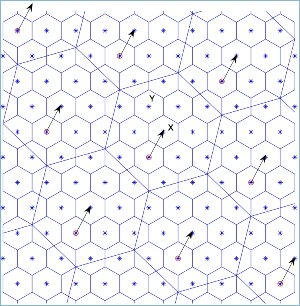This project covers three lines of basic and applied research:
-New sampling, quantifying and representing methods of distributed signals.
-Interaction between Physics and source coding, channel coding and routing in decentralized networks.
-Estimation/detection/distributed classification and robust control.
New methods of sampling and distributed quantification and signal representations: the sampling theory is the basis of the sensor network problems, since each sensor acts as a sampler in time and space. The nucleus of specific spatial sampling is determined by its physical process, by which will be necessary compatible signal representations with the subspace defined by them. As the sensor also requires a limited accuracy, the quantifying methods should be designed carefully.
Interaction between Physics and source coding, channel coding and routing in decentralized networks: assuming local communication between sensors, a structure of different spatial relationship will be produced, that will impact on the capacity, the choice of the distributed source and the strategies of channel codification more appropriated for the optimization of network routing. Moreover, depending on the specific task (estimation, detection and classification), the optimization of all the process in the sensors network will be different, as the performance measures differ substantially in each case.
Estimation/detection/distributed classification and robust control: in many applications, it is preferable “to close the loop” around the sensor network positioning actuators that may influence the physical process observed, establishing a continuous loop between the sampling, the estimation/detection/classification and the performance. The physical process will involve a clear contrast between the complexity of processing and delay constraints.
Swiss National Science Foundation













